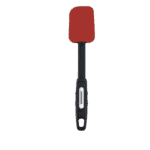Thai Drunken Noodles
Dive into the flavors of the streets of Thailand with Thai Drunken Noodles, or pad kee mao, featuring rice noodles stir-fried with shrimp and veggies in a spicy sauce, creating a dish that’s better than takeout. Quick and easy to whip up, these noodles bring a taste of Thai street food right to your table, bursting with bold flavors.
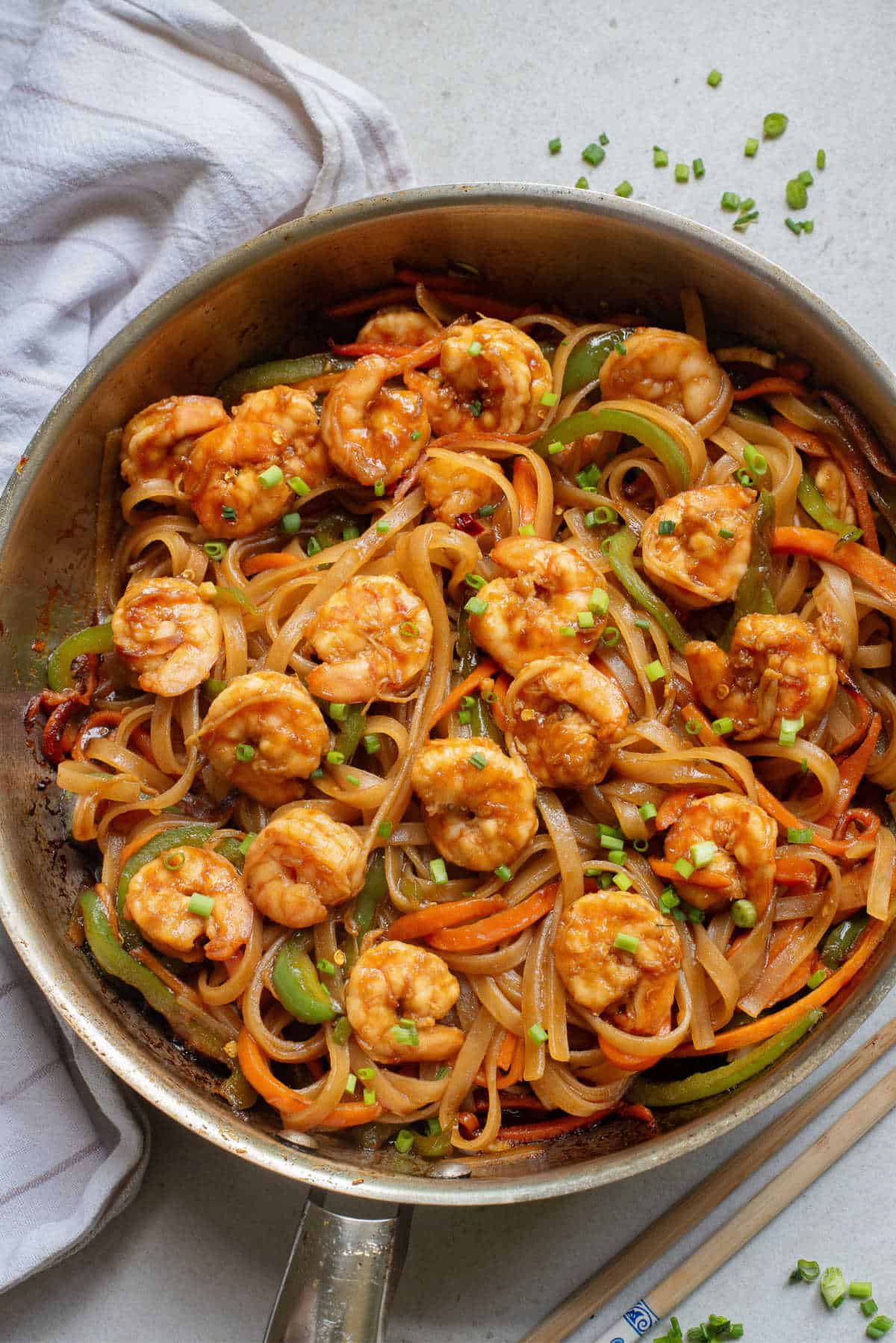
What makes Thai Drunken Noodles a true standout, I believe, is its story. Legend has it that its name refers to the level of spice – intense enough to sober up anyone who’s had one too many drinks. Whether or not that tale holds true, the playful name captures the essence of the dish: a combination of flavors so powerful, they could awaken your senses.
Why You’ll Love Thai Drunken Noodles
- Flavorful: The combination of fresh veggies, shrimp, fiery chilies, and a balance of salty and sweet sauces creates a complex and irresistible flavor profile.
- Customizable: Whether you prefer chicken, shrimp, or tofu, Drunken Noodles accommodate your taste, making it a dish that can be tailored to individual preferences.
- Texture: The perfect chewiness of the rice noodles contrasts beautifully with the crunch of the fresh vegetables, providing a satisfying mouthfeel with each bite.
- Hearty: This dish serves as a substantial meal, packed with protein and veggies, all coated in a deliciously savory sauce.
- Comforting: There’s a certain comfort in the warmth and spiciness of Drunken Noodles, which can be especially welcome if you’re looking for something to lift your spirits or warm you up.
Ingredients
- Dry rice noodles: Cook them according to the recommendations on the package.
- Vegetable oil: The oil comes in handy to cook the shrimp to perfection and stir fry the vegetables, contributing to the dish’s non-sticky texture.
- Shrimp: These little guys are the star protein of the dish and provide a sweet, succulent bite.
Green bell pepper: I add this for a hint of freshness and a crisp texture, plus it adds a pop of color. - Carrots: A must for me in terms of crunchy sweetness and making the dish more vibrant.
- Minced fresh garlic: The aroma and flavor this adds is essential—it’s the heart of many Thai dishes, including our drunken noodles.
- Red chili flakes: This brings the heat, but I always adjust according to how spicy I want my noodles.
- Oyster sauce: This is the foundation for the sauce’s depth and savory notes; it’s rich in umami and clings beautifully to the noodles.
- Soy sauce: It’s vital for that salty, complex flavor that balances the oyster sauce. I never skip it.
- Green onion: If I feel like adding some bright, oniony notes and a pop of green, I’ll sprinkle these on top just before serving.
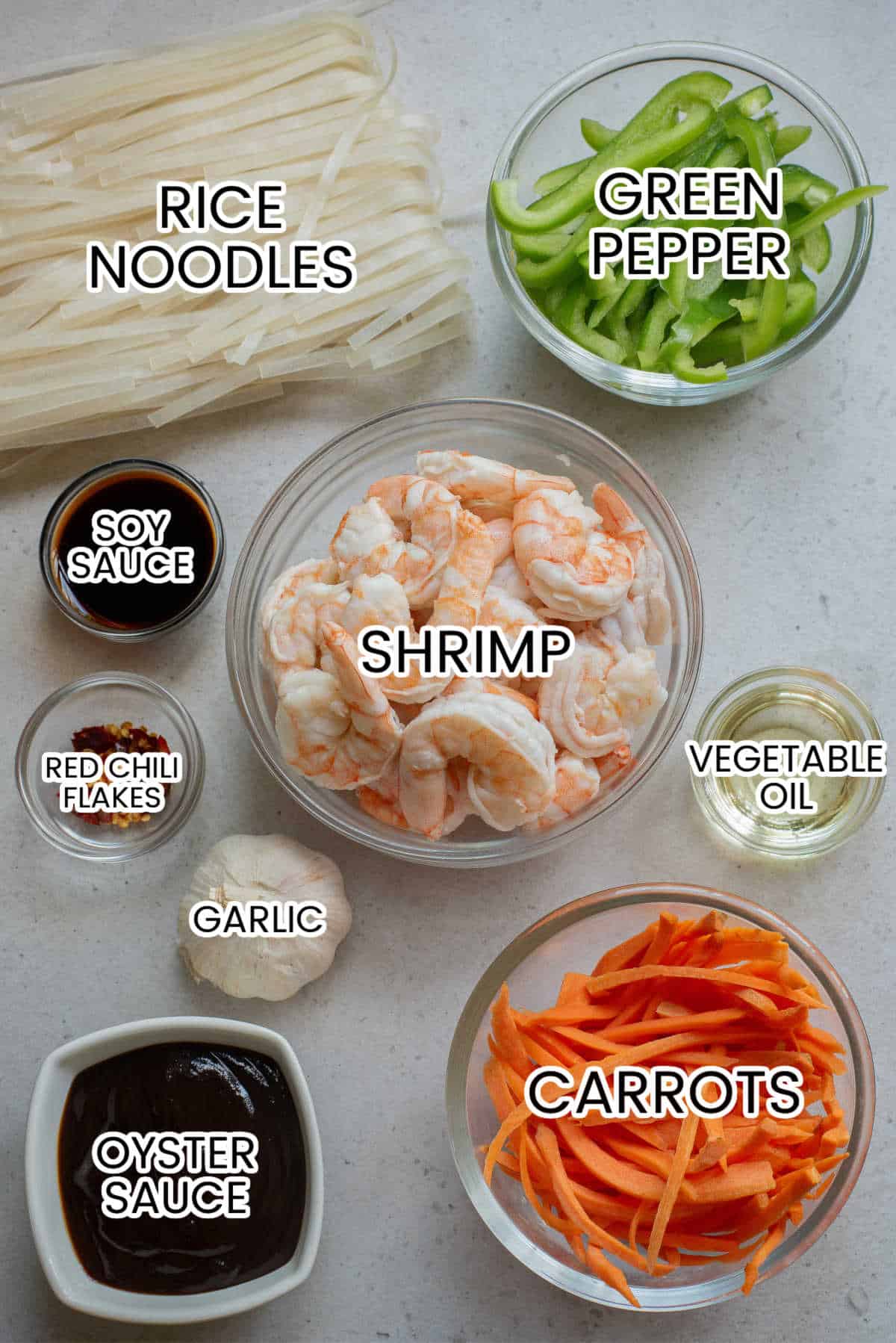
How to Make Thai Drunken Noodles
- Step One: Cook the rice noodles according to the package directions. Drain and set aside.
- Step Two: Add 1 tbsp vegetable oil to a large non-stick skillet or wok over medium heat. Saute the shrimp until pink, about 3 to 4 minutes. Remove from the pan and set aside. Wipe any excess liquid from the pan.
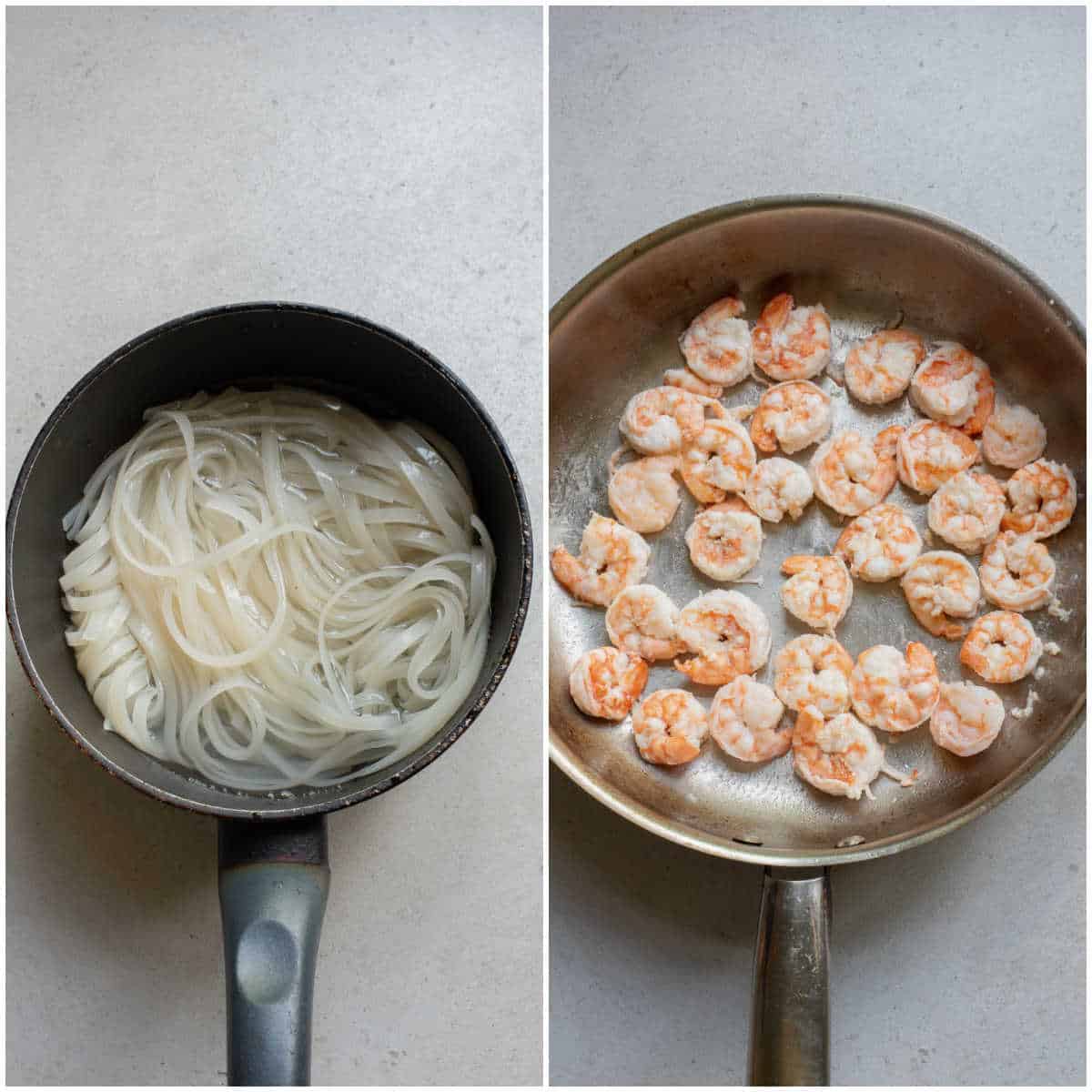
- Step Three: Add the remaining 1 tbsp vegetable oil to the skillet. Saute the green pepper, carrots and garlic until fragrant, about 3 to 4 minutes. Add shrimp back to the skillet and toss to combine.
- Step Four: In a small bowl, whisk the red chili flakes, oyster sauce and soy sauce. Pour the sauce into the skillet and stir together.
- Step Five: Cook for an additional 2 to 3 minutes until heated through.
- Step Six: Remove from the heat and garnish with chopped green onions, if desired. Serve hot.
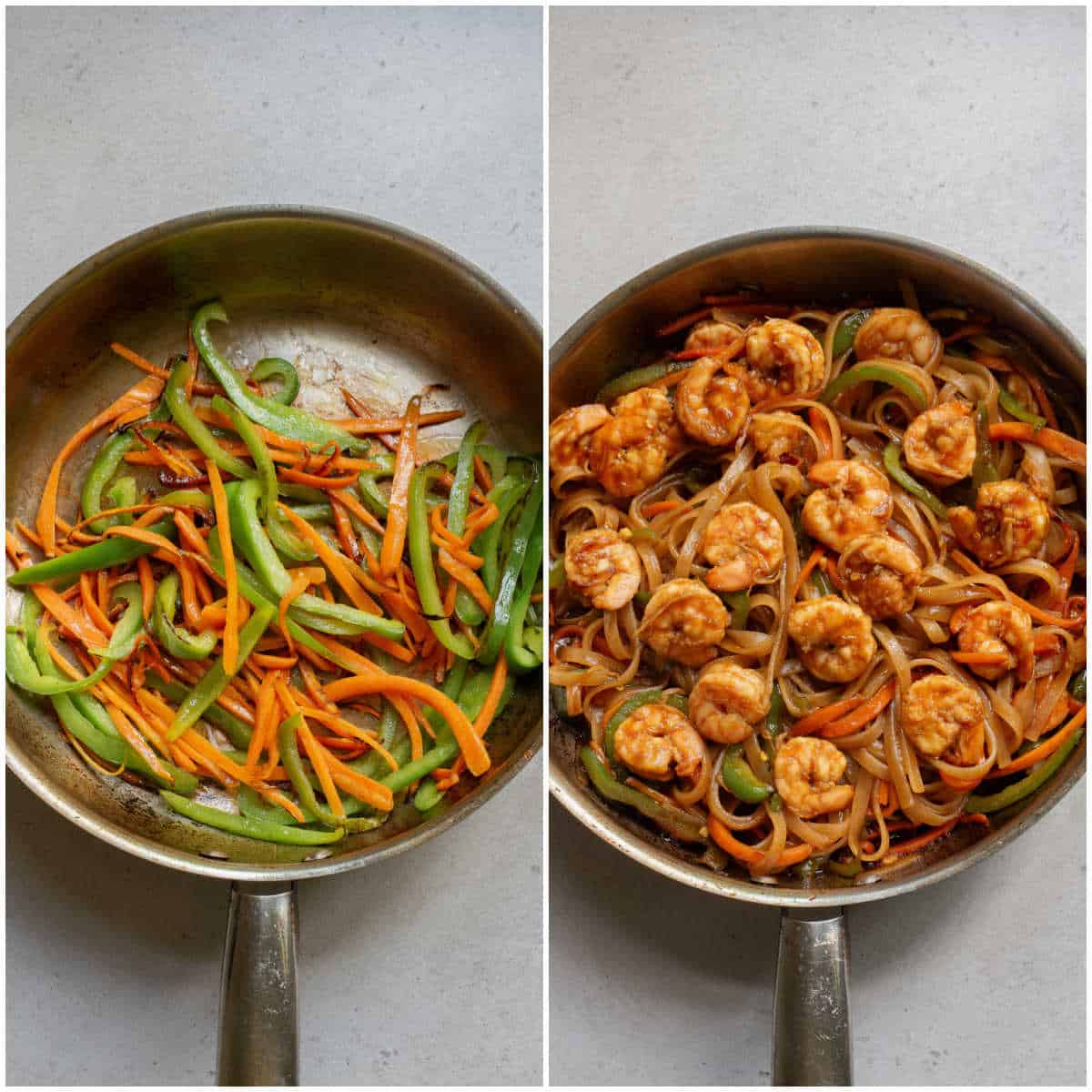
Equipment Needed
This post contains affiliate links for your convenience. As an Amazon Associate, we earn from qualifying purchases.
- Wok: The key to great drunken noodles is the wok’s ability to get really hot and impart a “wok hei,” or breath of the wok, taste.
- Tongs: I find tongs are the best tool for tossing and turning noodles in the wok.
- Knife: A sharp chef’s knife is crucial for prep work, like slicing meat and chopping vegetables.
- Cutting Board: A sturdy cutting board will protect your countertops.
What to Serve with Thai Drunken Noodles
- Fresh Thai Spring Rolls: The refreshing crunch of vegetables wrapped in rice paper is a delightful contrast to the rich, savory noodles.
- Cucumber Salad: I love a simple cucumber salad with a sweet and sour dressing. It’s a cool side that cuts through the spiciness of the dish.
- Papaya Salad (Som Tum): The crisp texture and tangy flavor of green papaya salad complements the noodles well.
- Thai Chicken Satay: Skewered and grilled chicken served with a creamy peanut sauce offers a satisfying protein addition.
- Grilled Vegetables: Lightly charred vegetables with a touch of sea salt bring out a natural sweetness that goes great with the complex flavors of Drunken Noodles.
- Tom Yum Soup: This hot and sour soup, filled with aromatic herbs, adds a soothing and flavorful element to the table.
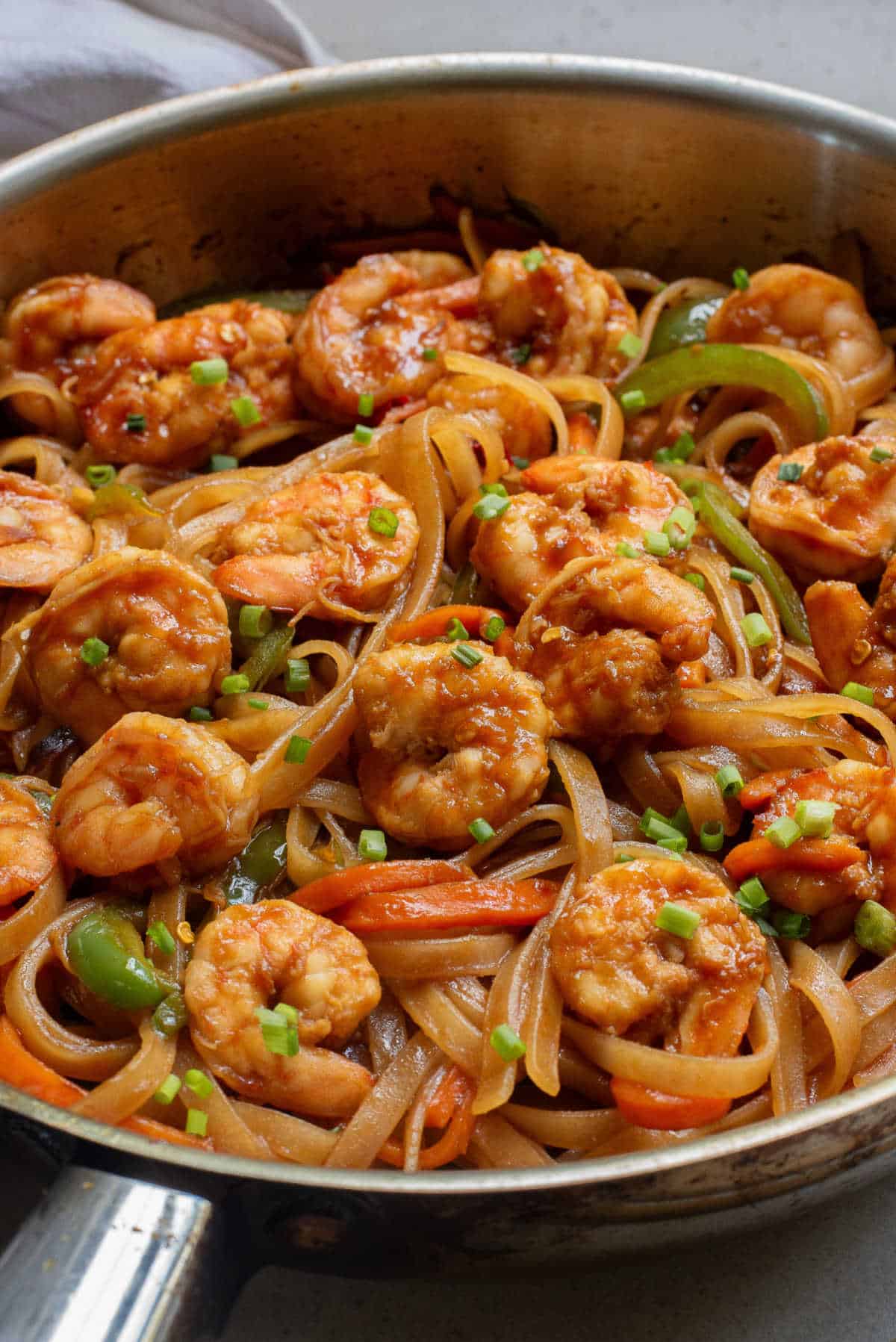
Variations and Substitutions
- Switch out the noodles: Substitute with egg noodles for a richer taste or Udon noodles for added chewiness.
- Try a different protein: Switch out the shrimp for chicken, pork or beef strips. Use tofu or tempeh for a vegan option.
- Add more veggies: Add onions, red bell pepper, snap peas, green beans, bok choy, broccoli, Chinese broccoli or baby corn.
- Make it extra spicy: Up the spice level with the addition of serrano peppers, red chili pepper or Thai chilies.
- Sweeten it up. Add some sweetness with a small addition of brown sugar, palm sugar, or maple syrup.
- Add Thai basil: I didn’t include it because it is hard to find, but you can add a cup of it if you wish.
Storage Instructions
- Cooling Down: I allow my noodles to cool to room temperature before storing. This usually takes about 15-30 minutes.
- Air-Tight Containers: I transfer the noodles into an air-tight container, ensuring there’s minimal air to prevent drying out or spoilage.
- For the refrigerator: Store noodles for up to 3-4 days.
- For the freezer: Store in a freezer safe container for up to 3 months.
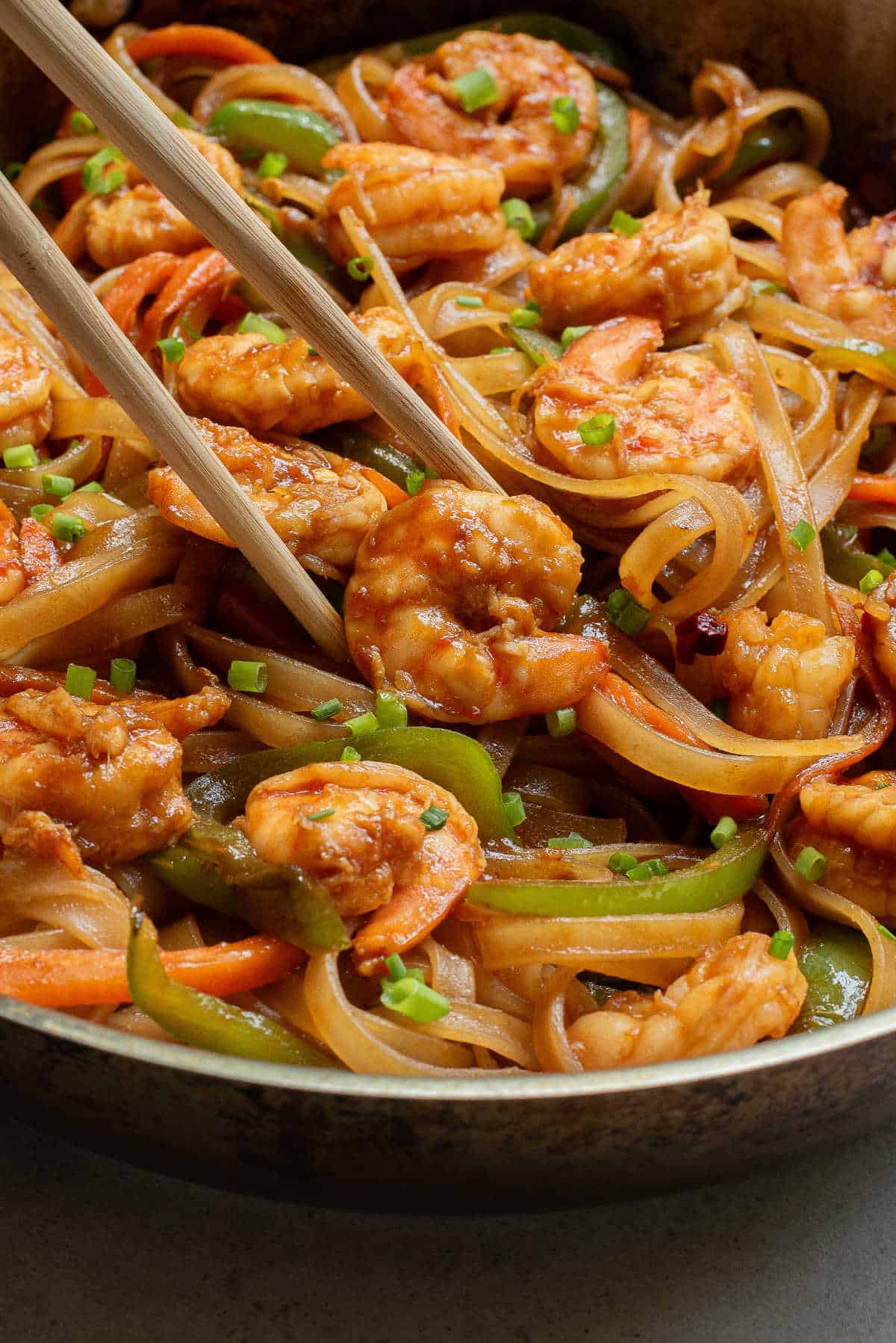
Recipe Tips and Tricks
- Prep Ahead: I chop all my vegetables and have my sauces measured out beforehand. This mise en place approach keeps things stress-free once the heat is on.
- Quality Ingredients: Using fresh herbs and high-quality fish sauce really makes a difference.
- Customizable Heat: Since everyone’s heat tolerance differs, I add chili to taste. It’s better to start with less—you can always add more but can’t take it away.
- Noodle Prep: I soak the rice noodles in warm water rather than boiling them. It prevents them from turning into mush when they hit the wok.
Thai Basil vs Holy Basil
Thai Basil and Holy Basil are two varieties commonly spotlighted in Thai cuisine, and here’s how they differ:
- Flavor: Thai Basil has a sweet, anise-like flavor with a hint of licorice and a spicy undertone. In comparison, Holy Basil, which is also known as Tulsi, offers a more peppery taste with clove-like notes that can be quite intense.
- Appearance: I notice Thai Basil has a sturdier, darker green leaf with a purple stem and flower, making it not only flavorful but also decorative in dishes. Holy Basil, on the other hand, has lighter green leaves and a slightly hairy appearance.
- Cooking: I use Thai Basil when I want the basil flavor to withstand longer cooking times as it’s more robust. Holy Basil wilts more readily and is often added at the end of cooking to preserve its essence.
- Usage: I include Thai Basil in a variety of dishes where I want a touch of sweetness and a subtle anise aroma. But, I reserve Holy Basil for dishes that require a more assertive herby and spicy flavor, like the authentic Drunken Noodles.

FAQ
How long does this recipe take to prepare?
It takes about 15 minutes to make.
How many servings?
This recipe makes about 4 servings.
Asian Inspired Dinners

JOIN OUR EMAIL LIST &
Get Your Free Weeknight Dinner Recipes eBook
Thai Drunken Noodles
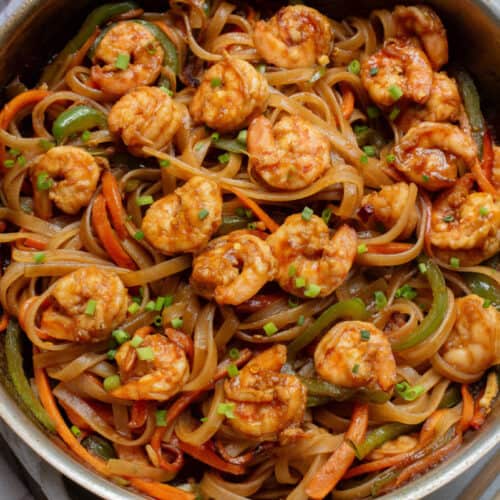
Equipment
Ingredients
- 7 oz dried rice noodles about 200g
- 2 tbsp vegetable oil divided
- 1 lb shrimp deveined and peeled
- 1 green bell pepper sliced
- 2 carrots peeled and sliced
- 2 tbsp minced garlic
- 1 tsp red chili flakes
- ⅓ cup oyster sauce
- 2 tbsp soy sauce
- chopped green onion for garnish, optional
Instructions
- Cook the rice noodles according to the package directions. Drain and set aside.
- Add 1 tbsp vegetable oil to a large non-stick skillet or wok over medium heat. Saute the shrimp until pink, about 3 to 4 minutes. Remove from the pan and set aside. Wipe any excess liquid from the pan.
- Add the remaining 1 tbsp vegetable oil to the skillet. Saute the green pepper, carrots and garlic until fragrant, about 3 to 4 minutes. Add shrimp back to the skillet and toss to combine.
- In a small bowl, whisk the red chili flakes, oyster sauce and soy sauce. Pour the sauce into the skillet and stir together.
- Cook for an additional 2 to 3 minutes until heated through.
- Remove from the heat and garnish with chopped green onions, if desired. Serve hot.





